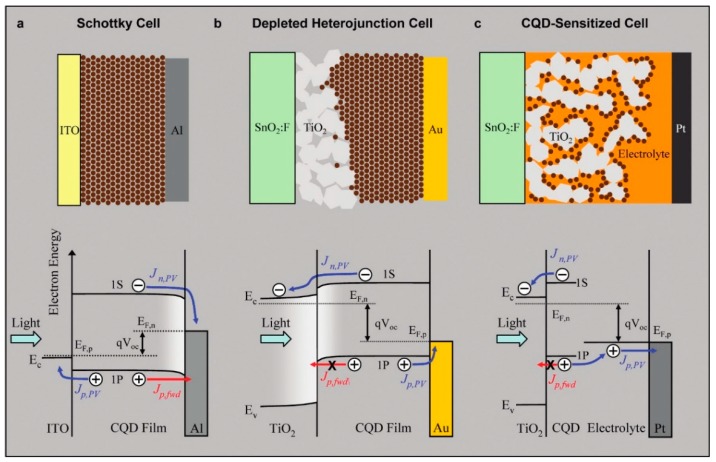Figure 2.
Comparison of three CQD photovoltaic architectures under photovoltaic operation close to maximum Voc. (a) The Schottky design has lower FF and Voc for a given Jsc, due to the poor barrier for hole injection into the electron-extracting contact; (b) the depleted heterojunction design combines the advantages of the other two cells, leading to simultaneously maximized FF, Voc, and Jsc; (c) the CQD sensitized cell employs a thin layer of absorber on a high surface area electrode. The light absorbing capacity of this design is lower, leading to poor Jsc, while it provides good FF and Voc. EF,n and EF,p are the electron and hole quasi-Fermi levels; Ec and Ev are the conduction and valence band edges; Jp,PV and Jn,PV are the hole and electron photocurrents (and are equal at steady state); Jp,fwd is the hole current in the forward bias direction. Reprinted with permission from [35]. Copyright 2013 American Chemical Society.

